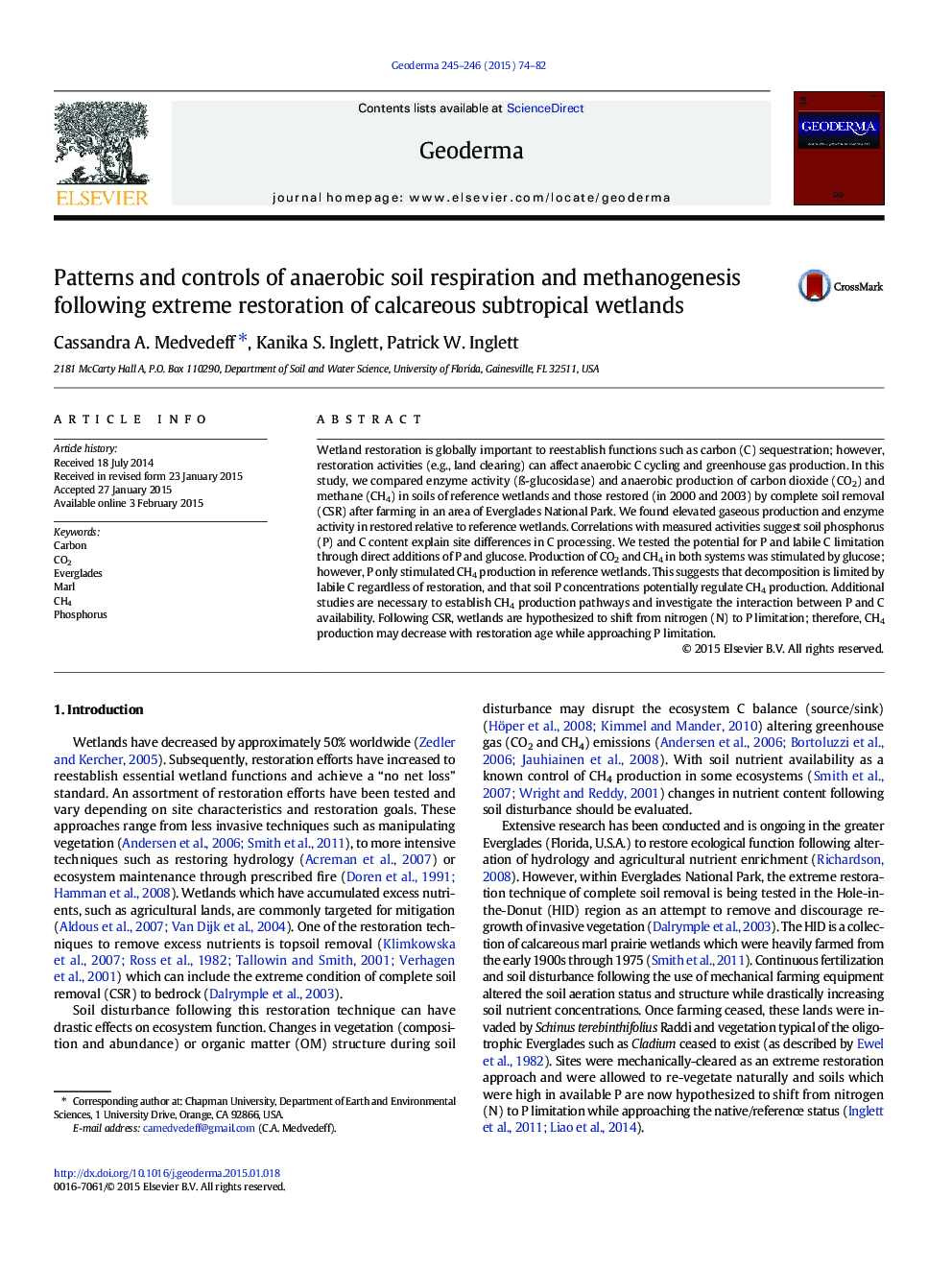| Article ID | Journal | Published Year | Pages | File Type |
|---|---|---|---|---|
| 4573190 | Geoderma | 2015 | 9 Pages |
•Complete soil removal stimulates anaerobic CO2 and CH4 production in marl wetlands.•C enzyme activity and gas production in restored sites is controlled by soil P and C.•Elevated CO2/CH4 post glucose addition suggests decomposition is limited by labile C.•Elevated CH4 post P addition in reference soil suggests production is P limited.•As restored wetlands shift from N to P limitation CH4 production may decrease.
Wetland restoration is globally important to reestablish functions such as carbon (C) sequestration; however, restoration activities (e.g., land clearing) can affect anaerobic C cycling and greenhouse gas production. In this study, we compared enzyme activity (ß-glucosidase) and anaerobic production of carbon dioxide (CO2) and methane (CH4) in soils of reference wetlands and those restored (in 2000 and 2003) by complete soil removal (CSR) after farming in an area of Everglades National Park. We found elevated gaseous production and enzyme activity in restored relative to reference wetlands. Correlations with measured activities suggest soil phosphorus (P) and C content explain site differences in C processing. We tested the potential for P and labile C limitation through direct additions of P and glucose. Production of CO2 and CH4 in both systems was stimulated by glucose; however, P only stimulated CH4 production in reference wetlands. This suggests that decomposition is limited by labile C regardless of restoration, and that soil P concentrations potentially regulate CH4 production. Additional studies are necessary to establish CH4 production pathways and investigate the interaction between P and C availability. Following CSR, wetlands are hypothesized to shift from nitrogen (N) to P limitation; therefore, CH4 production may decrease with restoration age while approaching P limitation.
